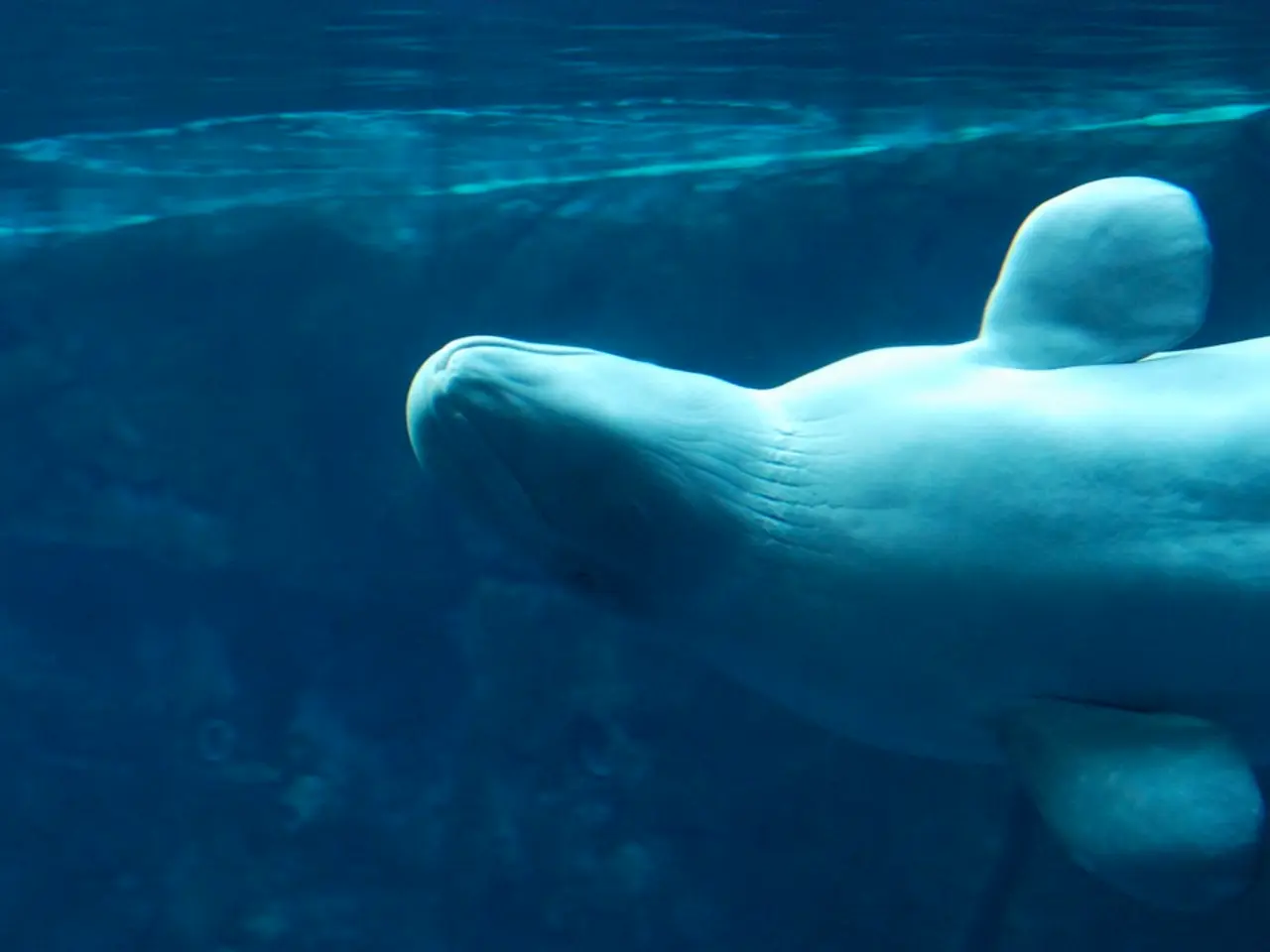Lakewater Safety: Essential Factors to Consider Before Swimming or Boating
Revamped Guide for Swimmers: Stay Safe in the Water
First and foremost, nobody wants an unpleasant outbreak after taking a dip—think red, itchy skin, diarrhea, or even critical infections. Sascha Maier, water expert at BUND, warns that bacteria or pathogens could be lurking in the water, often invisible to the naked eye.
However, there are some indicators to watch out for. For instance, finding dead fish is a glaring sign, but the most common peril in lakes is blue-green algae, a misnomer for cyanobacteria. You can often spot these algae changing the lake's color to green or blue-green.
Standing knee-deep in water but can't see your feet? That's a telltale sign. Moreover, blue-green algae can lead to streaks or blankets on the water's surface, and clouds may float around in the water. Sascha advises steering clear if you find yourself in such a situation.
Blue-green algae emerge more frequently following spots of sunlight and hot weather, and if nearby fields have been fertilized heavily. Some strains irritate the skin, while others produce toxins that could be harmful if consumed in large quantities. FYI, our four-legged friends are even more sensitive to these algae.
Now, there are tiny organisms like Vibrions and cercariae that could challenge swimmers. Unfortunately, these minuscule creatures can't be spotted with just your eyes. Cercariae are larvae primarily infecting waterbirds, but they occasionally target human skin. Consequently, you might experience unpleasant skin reactions. Cercariae thrive in water temperatures around 20°C (68°F), says Sascha. Local authorities usually give the heads-up if a body of water is contaminated with cercariae. Generally, it's wise to avoid the shoreline, stay out of shallow water, and vigorously towel-off after taking a swim.
When it comes to Vibrions, they wreak havoc at water temperatures above 20°C. "Existing wounds can exacerbate due to vibriosis," Sascha describes. Severe cases of infection are more common in individuals with weak immune systems. Nevertheless, vibriosis is predominantly found in saltier waters like the Baltic Sea. Beachgoers are encouraged to check local news for updates.
Bear in mind, a lake can get polluted by debris. After heavy rain, runoff from the land can happen. If the water seems unclear, it's usually easy to spot. Additionally, wastewater treatment plants near water sources may release pollutants. With lake levels lower in the summer, more water passing through wastewater treatment plants is inevitable, which can lead to pollution.
If you'd like to stay updated about water quality, consider visiting the German Environmental Agency, Federal Institute of Hydrology, and European Environment Agency's websites. However, non-designated bathing waters may not appear in such reports. So, it's crucial to watch out for visible signs of pollution and stay updated through local media in such cases.
Tips Summarized:
- Blue-green algae can be noticed by a change in water color, texture, and the appearance of streaks, clouds, or green scum.
- Avoid swimming where blue-green algae is visible or suspected.
- Cercariae can cause skin irritation, thrive in water temperatures around 20°C, and are more predominant in summer near shore plants and in shallow water.
- Vibrions worsen existing wounds, primarily found in water temperatures above 20°C, and are more common in saltier waters like the Baltic Sea.
- Be aware of debris and pollution after heavy rain and from wastewater treatment plants.
- Inspect local media and follow posted signs for water quality updates before swimming.
Stay safe and happy swimming!
In the realm of health-and-wellness and fitness-and-exercise, regular swimmers are advised to be vigilant regarding water safety, especially when it comes to antibacterial and algal growth. For instance, paying attention to changes in water color, texture, or the presence of streaks, clouds, or green scum can indicate blue-green algae, which can lead to unpleasant skin reactions.
To further safeguard one's health, it's prudent to keep abreast of nutritional information about water quality, such as information available from the German Environmental Agency, Federal Institute of Hydrology, and European Environment Agency, to ensure the swimmers are not unknowingly exposing themselves to harmful pathogens or pollutants.







